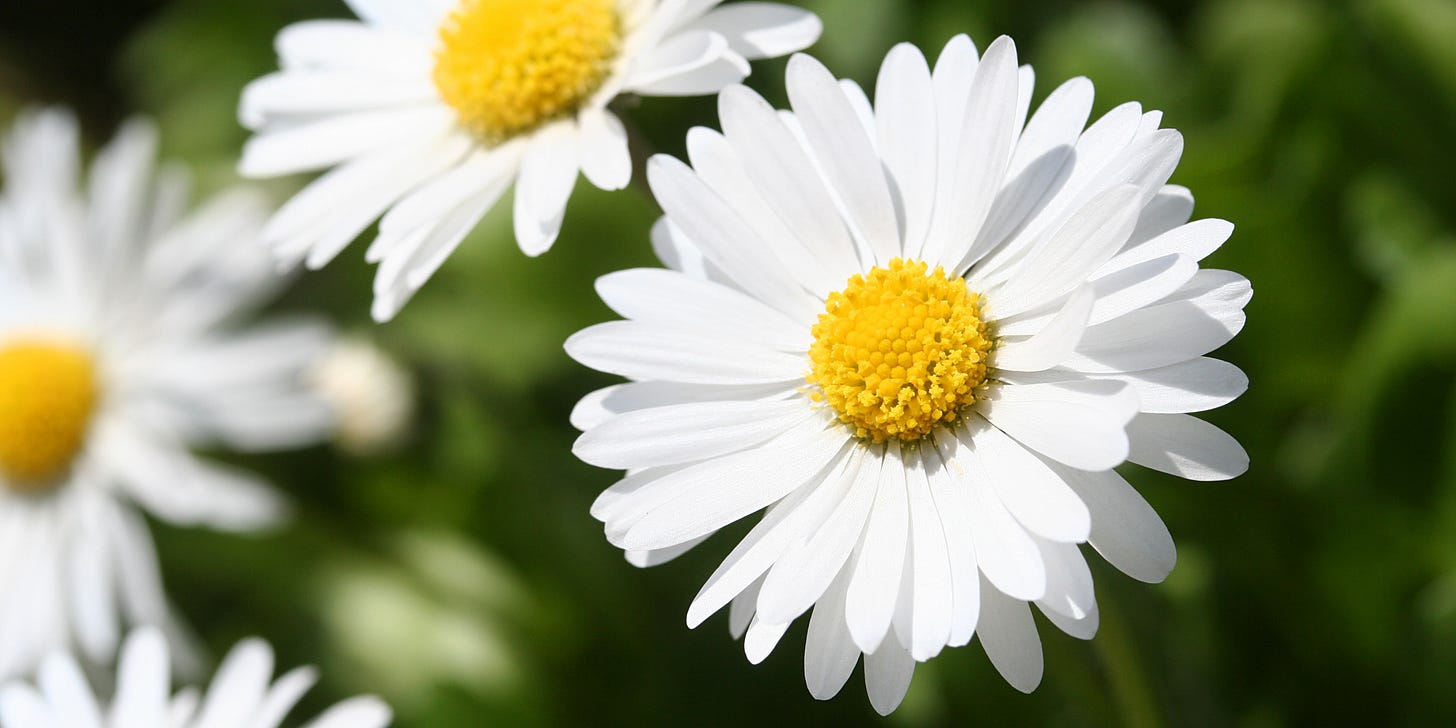In her essay “Be Specific” from Writing Down the Bones, Natalie Goldberg discusses the power of naming things, especially as a way to ground ourselves in nature.
About ten years ago I decided I had to learn the names of plants and flowers in my environment. I bought a book on them and walked down the tree-lined streets of Boulder, examining leaf, bark, and seed, trying to match them up with their descriptions and names in the book. Maple, elm, oak, locust. I usually tried to cheat by asking people working in their yards the names of the flowers and trees growing there. I was amazed how few people had any idea of the names of the live beings inhabiting their little plot of land.
When we know the name of something, it brings us closer to the ground. It takes the blur out of our mind; it connects us to the earth. If I walk down the street and see “dogwood,” “forsythia,” I feel more friendly toward the environment. I am noticing what is around me and can name it. It makes me more awake.
Goldberg goes on to recommend the poet William Carlos Williams as a quality example of writing specifically. She quotes a few lines from his poem “Daisy” to show how he names nature and describes it meticulously. Although Goldberg only includes a few morsels of the poem to illustrate her point, I will share the whole thing here, so you really get the idea:
Daisy
by William Carlos Williams
The dayseye hugging the earth
in August, ha! Spring is
gone down in purple,
weeds stand high in the corn,
the rainbeaten furrow
is clotted with sorrel
and crabgrass, the
branch is black under
the heavy mass of the leaves—
The sun is upon a
slender green stem
ribbed lengthwise.
He lies on his back—
it is a woman also—
he regards his former
majesty and
round the yellow center,
split and creviced and done into
minute flowerheads, he sends out
his twenty rays— a little
and the wind is among them
to grow cool there!
One turns the thing over
in his hand and looks
at it from the rear: brownedged,
green and pointed scales
armor his yellow.
But turn and turn,
the crisp petals remain
brief, translucent, greenfastened,
barely touching at the edges:
blades of limpid seashell.
Daisy is my favorite name for a flower. If you know me, you know why.

Williams is certainly specific, right? Not even the most avid gardener in your average neighborhood would say something like, “Bro, check out the blades of limpid seashell on my daisies.”
Writers though—especially poets—love that kind of specificity for two reasons:
Grounding us in a close perspective on a particular situation
Originality of language
For a more practical example, consider the simple importance of remembering the names of the people in your life. Goldberg uses the example of a writing group.
In writing groups and classes too, it is good to quickly learn the names of all the other group members. It helps to ground you in the group and make you more attentive to each other’s work.
This is precisely why it’s a pet peeve of mine when teachers don’t learn and remember the names of their students. What can you possible teach a group of people across the duration of a class if you are not grounded or attentive enough to have a specific name for the individual humans in front of you?
In Goldberg’s final chunk of advice, she writes:
Learn the names of everything: birds, cheese, tractors, cars, buildings. A writer is all at once everything—an architect, French cook, farmer—and at the same time, a writer is none of these things.
A writer, a writing teacher, or really any subject of teacher will improve their trade by familiarizing themself with the vocabulary of other fields. And I’m not just talking about flowers.

